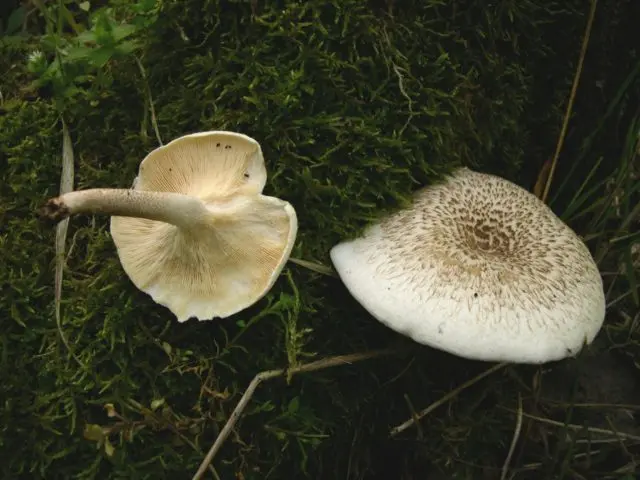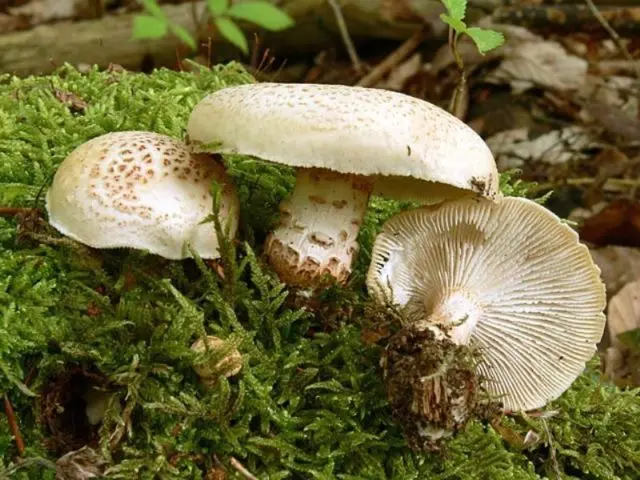Contents
Furrowed sawfly is an inedible representative of the Proliporaceae family. This species is a single specimen of the genus Heliocybe. The fungus is a saprophyte, located on dead or rotten wood. The species is considered rare, therefore, in some regions of Our Country it is listed in the Red Book.
What does a furrowed sawfly look like?
The furrowed sawfly is difficult to confuse with other representatives of the mushroom kingdom. Since it has an unforgettable appearance, it is impossible to pass by it. To recognize it, you need to view the photo and familiarize yourself with external data.
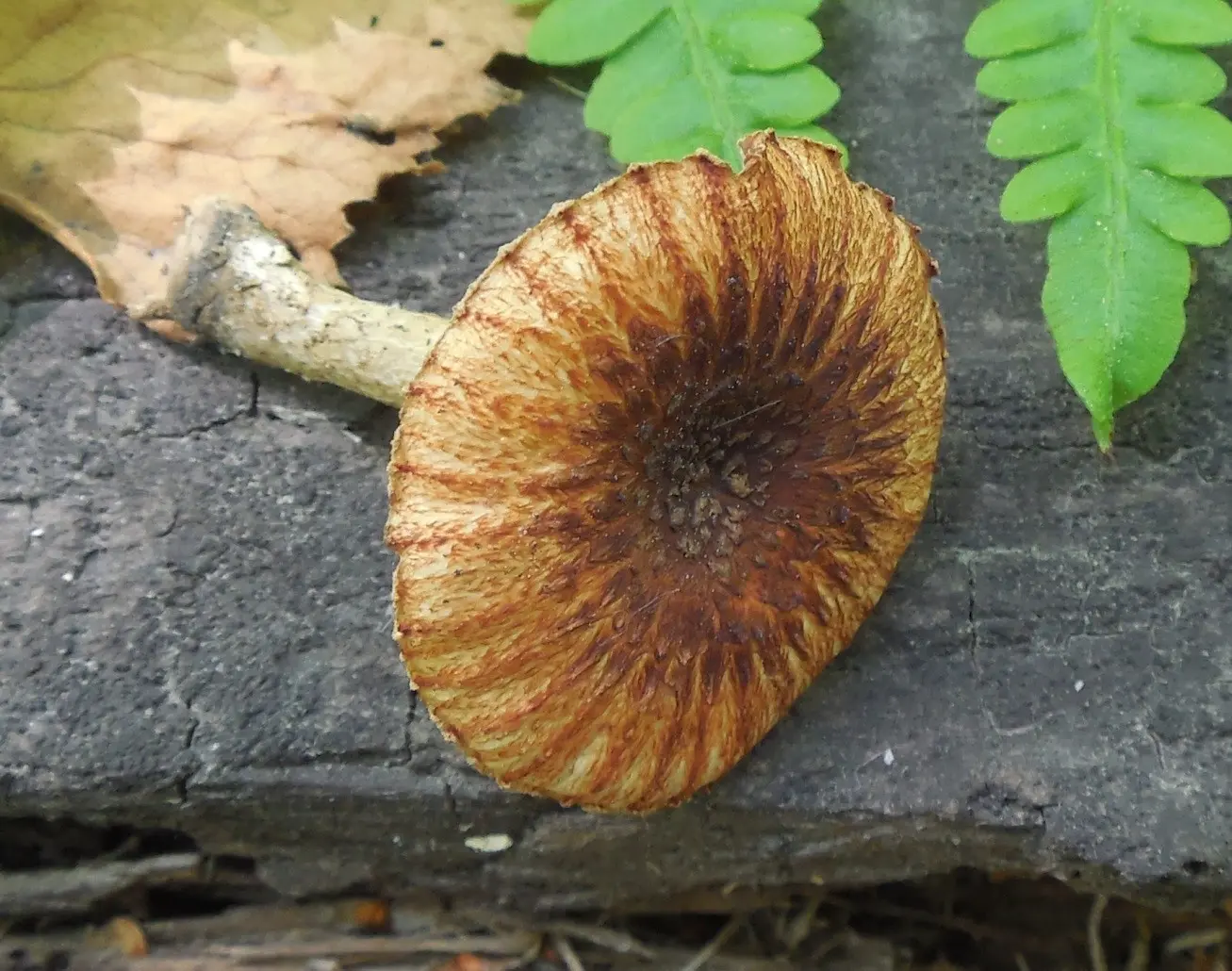
Cap Description
The hat is small, reaches 4 cm in diameter. In young specimens, it has a convex shape, gradually straightens as it grows, leaving a small dent in the center. The surface is covered with orange or ocher-brown skin. With age, the edges become discolored and acquire a light yellow color. The skin is dry, slightly rough to the touch, covered with a scaly pattern.
The lower layer is formed by frequent, whitish plates. In adult specimens, they are dark, and the edges become serrated or sawtooth. Snow-white or coffee pulp is dense, fleshy, does not change color when damaged. Reproduction occurs by oblong spores, which are in a snow-white powder.
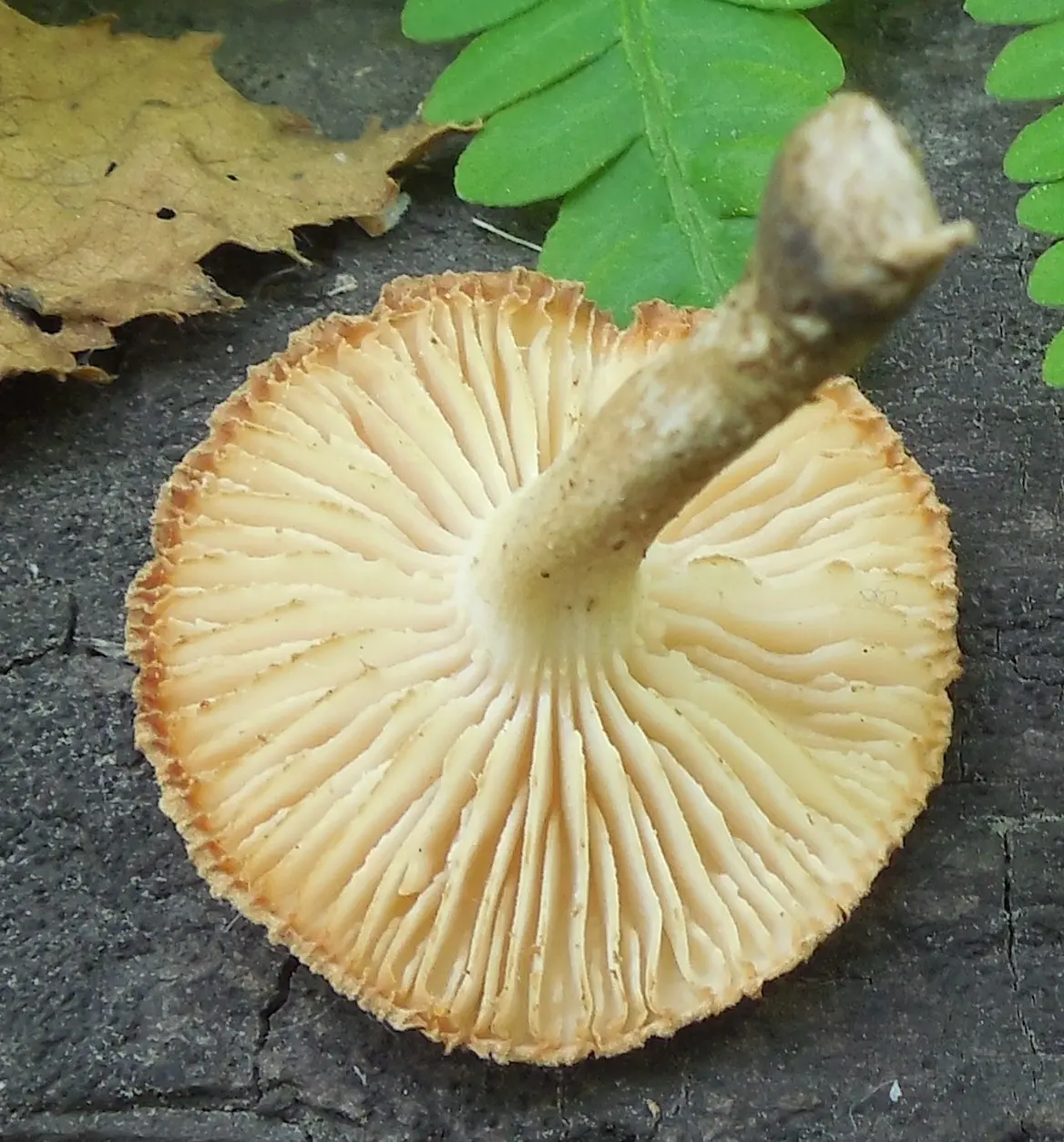
Description of the leg
The cylindrical leg reaches a height of 3 to 15 cm, the size depends on the place of growth. The surface is covered with a dirty gray or cream skin, numerous brown scales are noticeable at the base. The flesh is tough and fibrous.
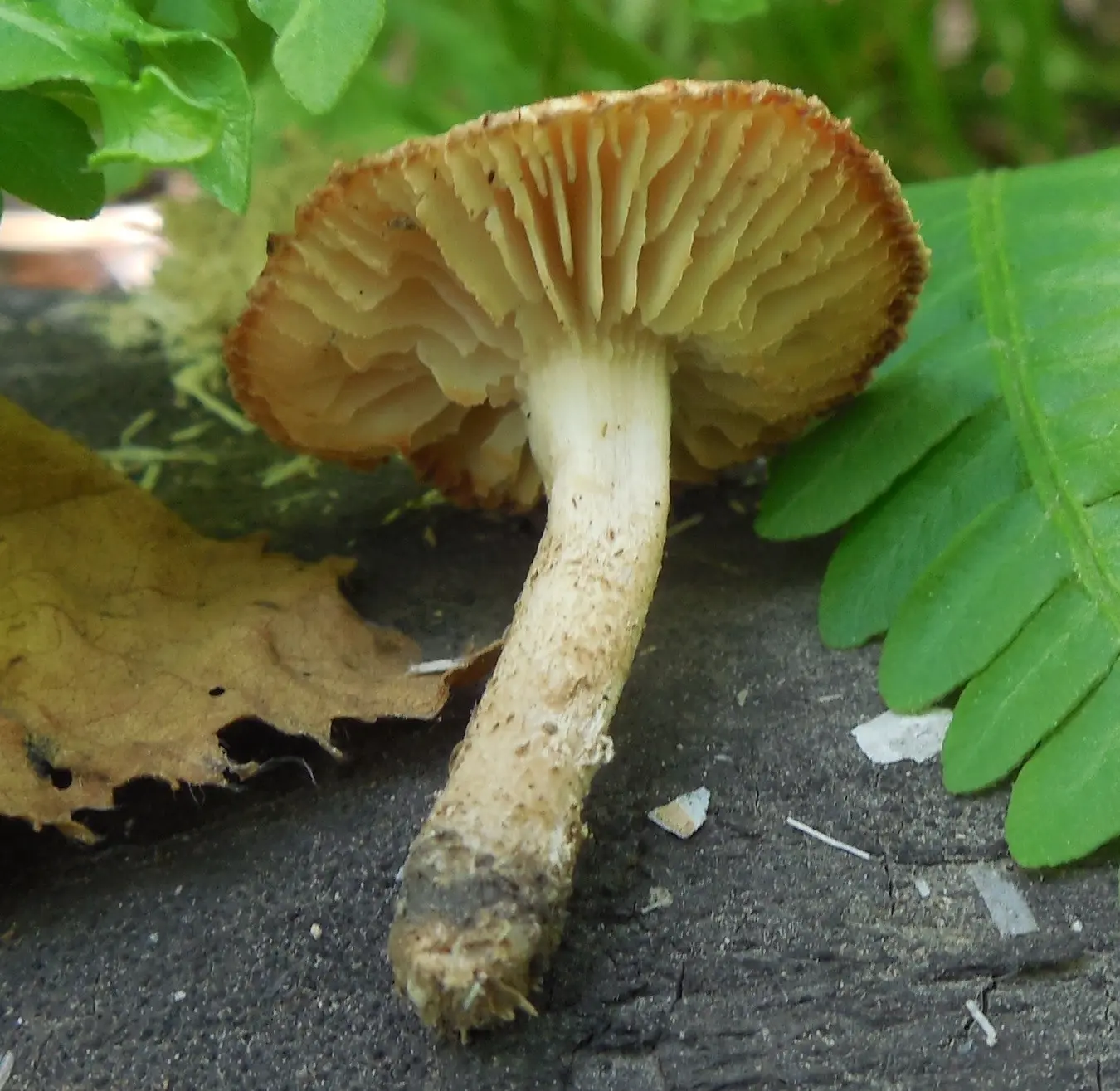
Where and how to grow
This specimen prefers to grow on a woody substrate, dry, rotting hardwood. Sometimes the species can be found on conifers and living trees, it causes brown rot on them. The furrowed sawfly can grow on damp, damaged trees and on dry, recycled boards.
Is the mushroom edible or not?
The fruit body has not been fully studied, but due to the lack of taste and smell, the species is considered inedible. Therefore, in order not to harm your health, you need to pass by unfamiliar specimens.
Twins and their differences
The furrowed sawfly is difficult to confuse with other species due to unusual external data. But in the Piloporov family there are edible counterparts:
- Brindle – a conditionally edible forest dweller growing on rotten wood. It can be recognized by its light gray cap with dark brown scales and a slightly curved cylindrical stem. The pulp is tasteless and odorless.

- Scaly – This specimen belongs to the 4th group of edibility. Grows on dry, rotten hardwood. The pulp is fleshy, with a pronounced mushroom taste and smell. The fungus can often be found on telegraph poles and sleepers. But if this representative is used for cooking, it must be remembered that the mushroom collection must be carried out in environmentally friendly places, away from highways and railway tracks.

Interesting facts about the furrowed sawfly
In the scientific literature about the furrowed sawfly, you can find out interesting facts. Such as:
- The fruit body never rots.
- With age, the fungus does not rot, but dries out.
- A dried fungus can recover and continue development with increasing humidity.
- In some regions of Our Country, this specimen is listed in the Red Book.
- The pattern on the hat resembles the sun with rays, so the mushroom is very difficult to confuse with other inhabitants of the forest.
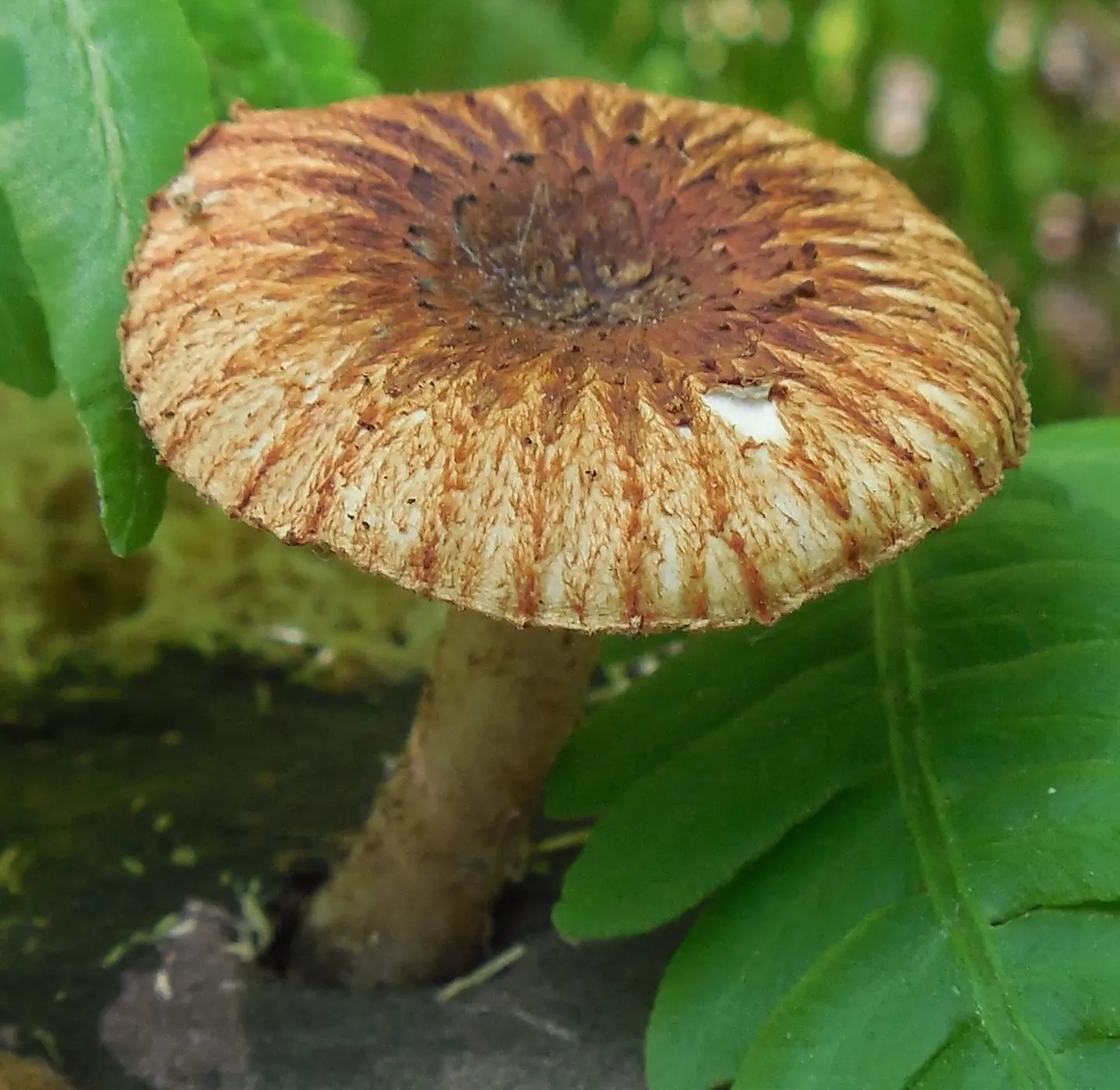
Conclusion
Furrowed sawfly is an inedible forest dweller that grows on dry and living trees from May until the first frost. Due to the beautiful pattern, the mushroom is very popular with mushroom pickers-photographers. Therefore, when meeting, it is better not to touch him and after the photo shoot pass by.










